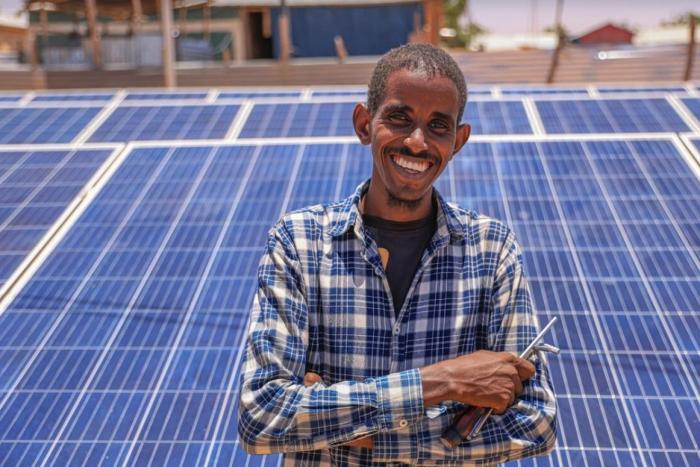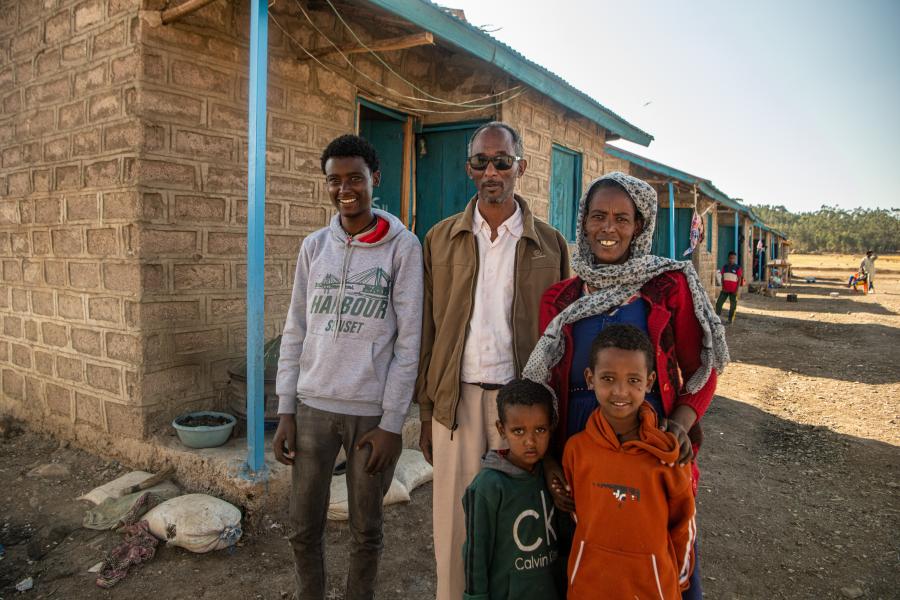Year-end population figures | 2021 - 2023
2023 situation overview
Ethiopia faced multiple emergencies amid critical levels of underfunding in 2023. After two years of civil war, a November 2022 peace agreement brought an end to the conflict in northern Ethiopia that had displaced hundreds of thousands of people within the country and across the border to Sudan.
Despite the peace agreement, many internally displaced people in the northern Ethiopian region did not return to their homes. Hundreds of thousands endured dire conditions in overcrowded collective sites, receiving minimal assistance.
Under the auspices of the Durable Solutions Working Group (DWSG) chaired by the regional/zonal authorities, UNHCR and partners, with limited resources, facilitated some IDPs’ voluntary returns in safe and dignified conditions to their places of origin. Returning IDPs received core relief items and cash assistance, helping them to pay for their transport and basic needs such as food and medicine. UNHCR conducted post-return monitoring to identify any protection needs in the areas of return and advocated for solutions to make returns sustainable.
UNHCR counselled 213,900 individuals, providing information on their areas of return for them to be able to make a well-informed decision to return. UNHCR facilitated the voluntary return of 111,000 IDPs to their places of origin in the Tigray region. Around $35 in cash assistance was provided to each household upon their return. Another 103,000 individuals were provided counselling and said they were ready to return. UNHCR collaborated with regional authorities to ensure the safe return of displaced people.
In Sudan, the unpredictable and tense security situation affected the delivery of humanitarian services for Ethiopian refugees in 2023.
However, despite the conflict, UNHCR and Refugee Working Group partners continued the delivery of protection and assistance in the refugee camps in Eastern Sudan. A temporary pause of movement by the Government was imposed shortly after the outbreak of conflict in Sudan on 15 April 2023, but these restrictions were lifted after two weeks, which allowed UNHCR and partners to resume their presence and activities in the camps in May 2023.
By 31 December 2023, there were 51,500 refugees and asylum-seekers in Gedaref. 45,600 were in four refugee camps (Tunaydbah, Um Rakuba, Babikri and Um Gargour) and 5,900 in three reception areas (Hamdayet, Village 8 and Um Gulja). Of those in the refugee camps, 43% were female and 57% were male. 91% of those in the camps were Ethiopian.
UNHCR also helped almost 2,000 Ethiopian refugees and asylum-seekers in Sudan after they were forced to flee from Khartoum, Al Jazirah, and other conflict areas. They were relocated to refugee camps where they were registered and provided with protection and assistance.
Over 5,000 Ethiopian refugees and asylum-seekers in Sudan received cash assistance, including former peacekeepers from UNAMID and UNISFA who have been recognized as refugees in Sudan. In addition, 15,800 refugees and asylum-seekers were supported with emergency shelters, 582 individuals were supported with durable shelter (tukuls) and close to 1,000 refugees received core relief items.
The Ethiopian refugees in the camps in Gedaref often reported feeling heightened anxiety about the impact of the conflict in Sudan on their safety and were faced with increasing economic hardship due to the loss of livelihoods, reduced employment opportunities and disruptions to the banking system, which affected their ability to receive remittances from abroad. The deteriorating socioeconomic conditions, loss of livelihoods and surge in inflation also aggravated protection risks, including sexual exploitation and abuse, gender-based violence and human trafficking. In response, UNHCR scaled up community-based risk awareness efforts.
The protection response in Sudan gave particular attention to gender-based violence, sexual exploitation and abuse, and maintaining the civilian and humanitarian character of asylum within the camps. Some of the key areas of work included strengthening referral pathways, raising awareness on response services available and supporting community-based networks, including additional protection desks and child-friendly spaces and psychosocial support. Inter-agency training was provided to Government officials, humanitarian actors and refugee volunteers.
Solar cooperative brings light and development to refugees in Ethiopia
By Roger Burks in Melkadida, Ethiopia
The nearest national electric grid to Ethiopia’s Melkadida Refugee Camp is more than 200 kilometres away. Yet there is power. There is light.
A partnership between UNHCR and IKEA Foundation is drawing on the skills of refugees and host communities in Ethiopia’s Melkadida to power a refugee camp.
Read the story










